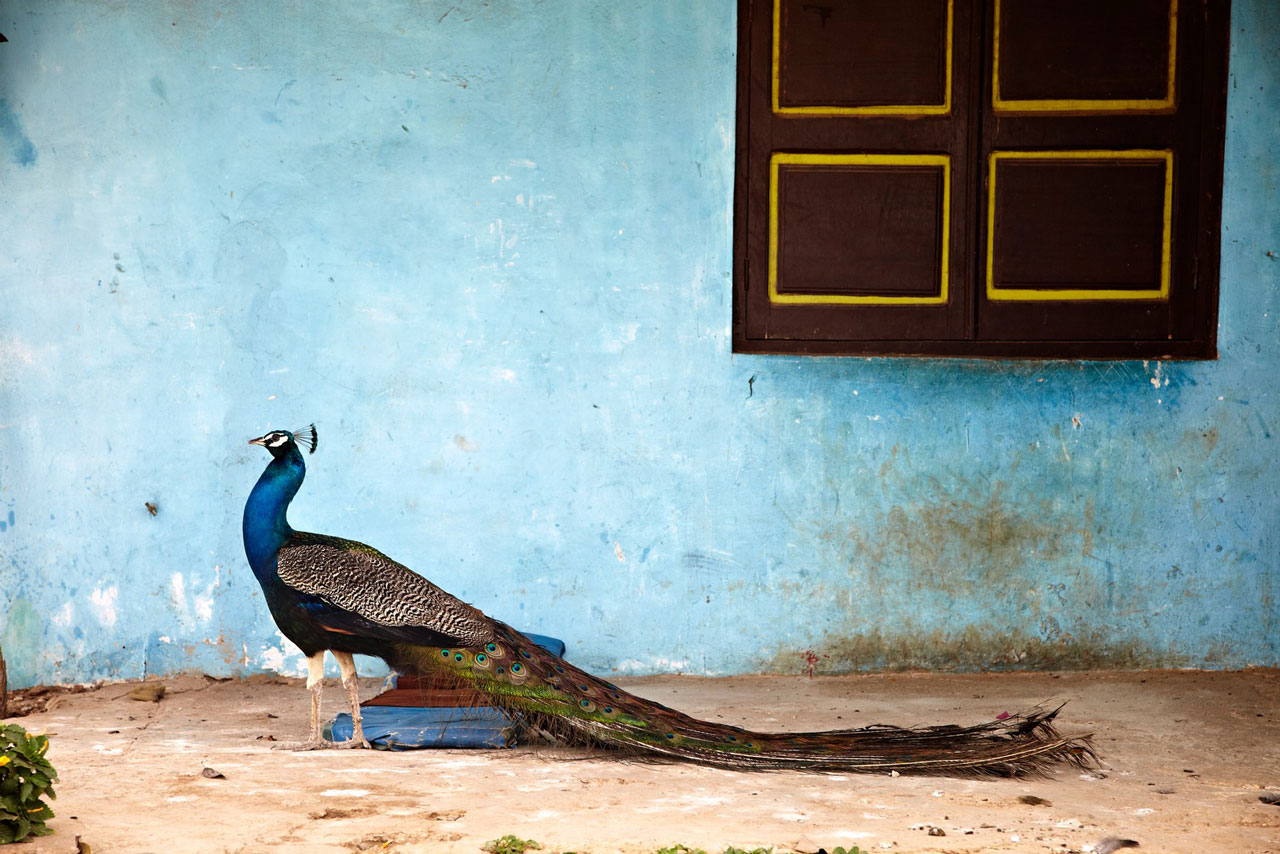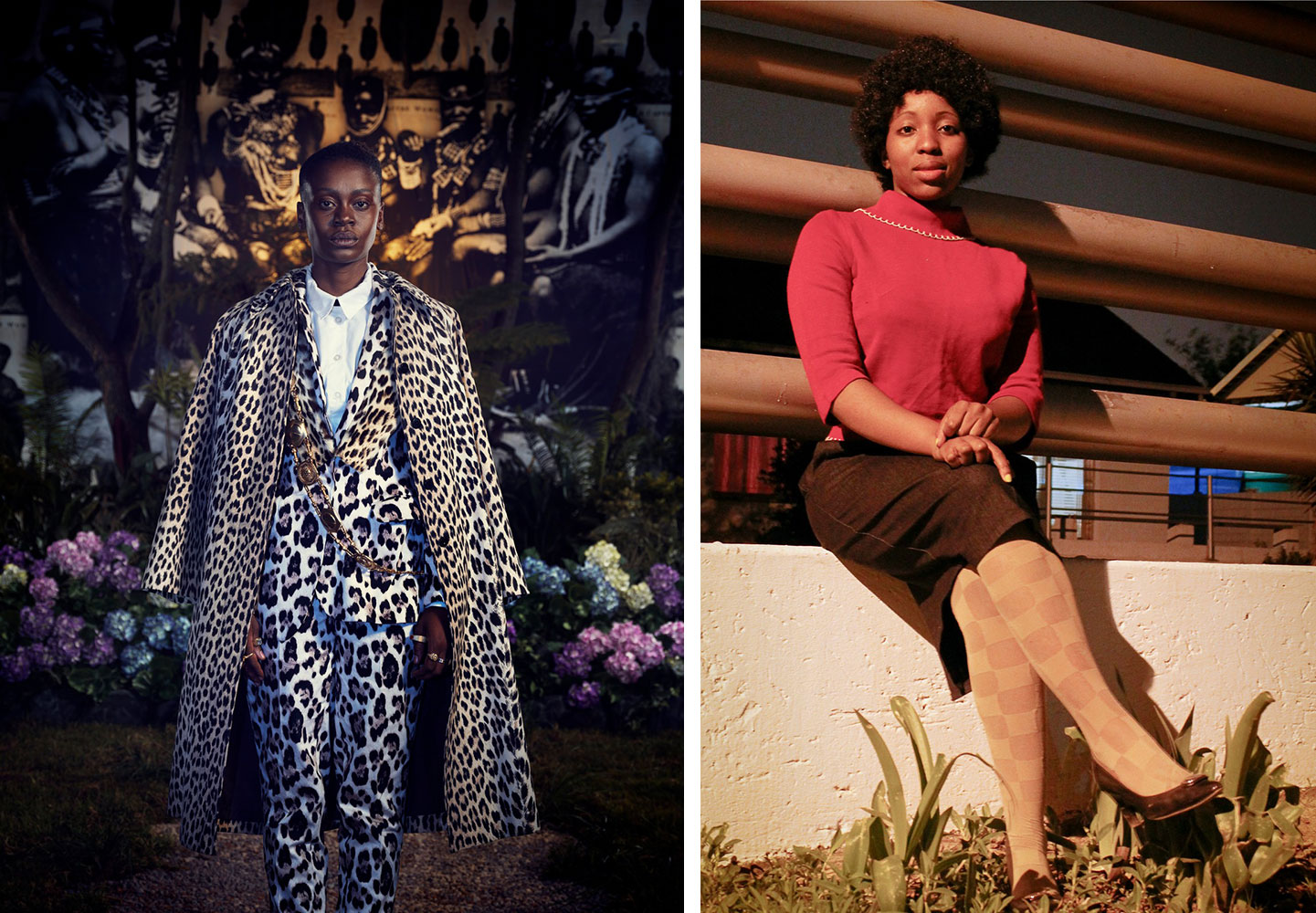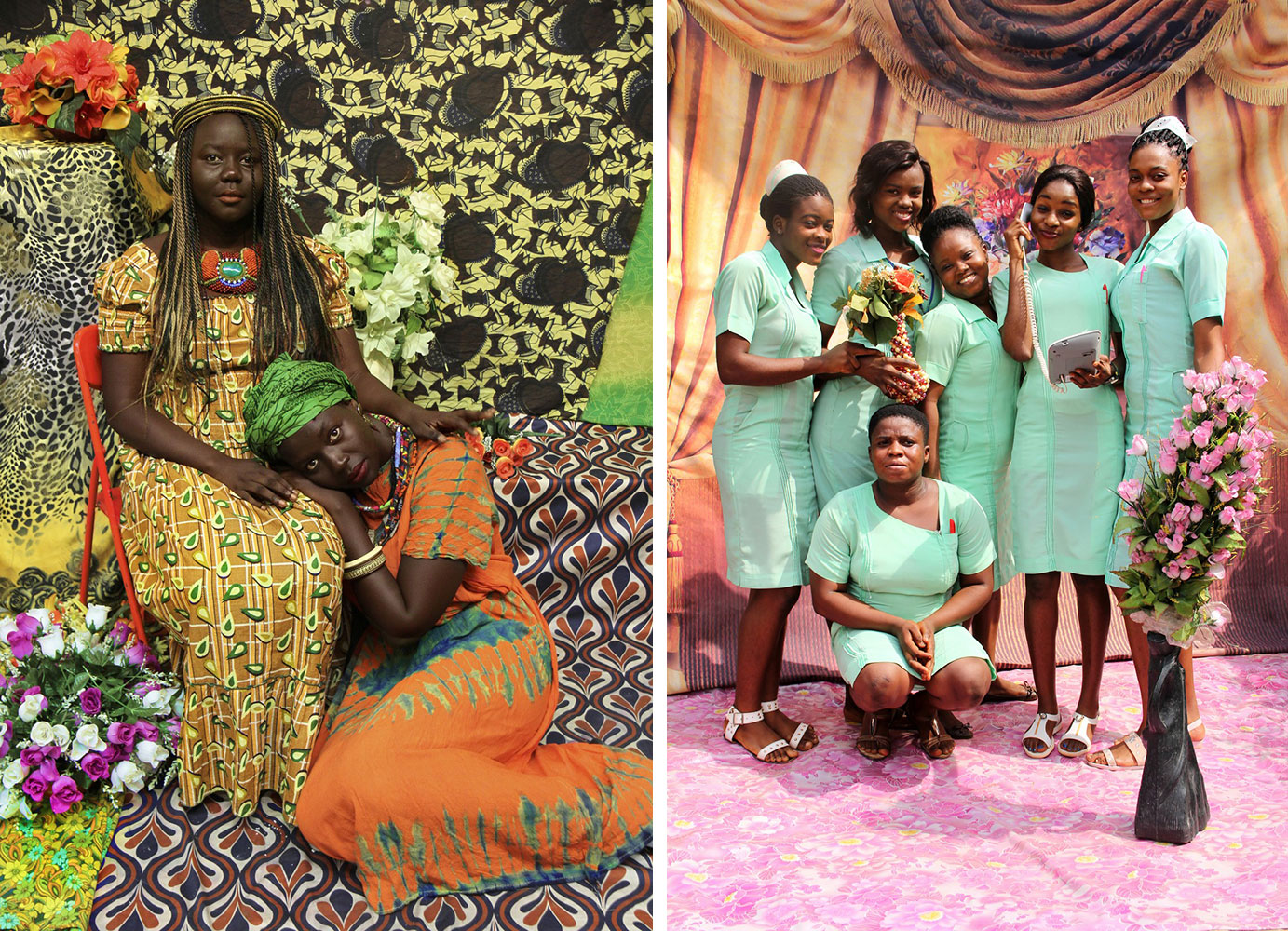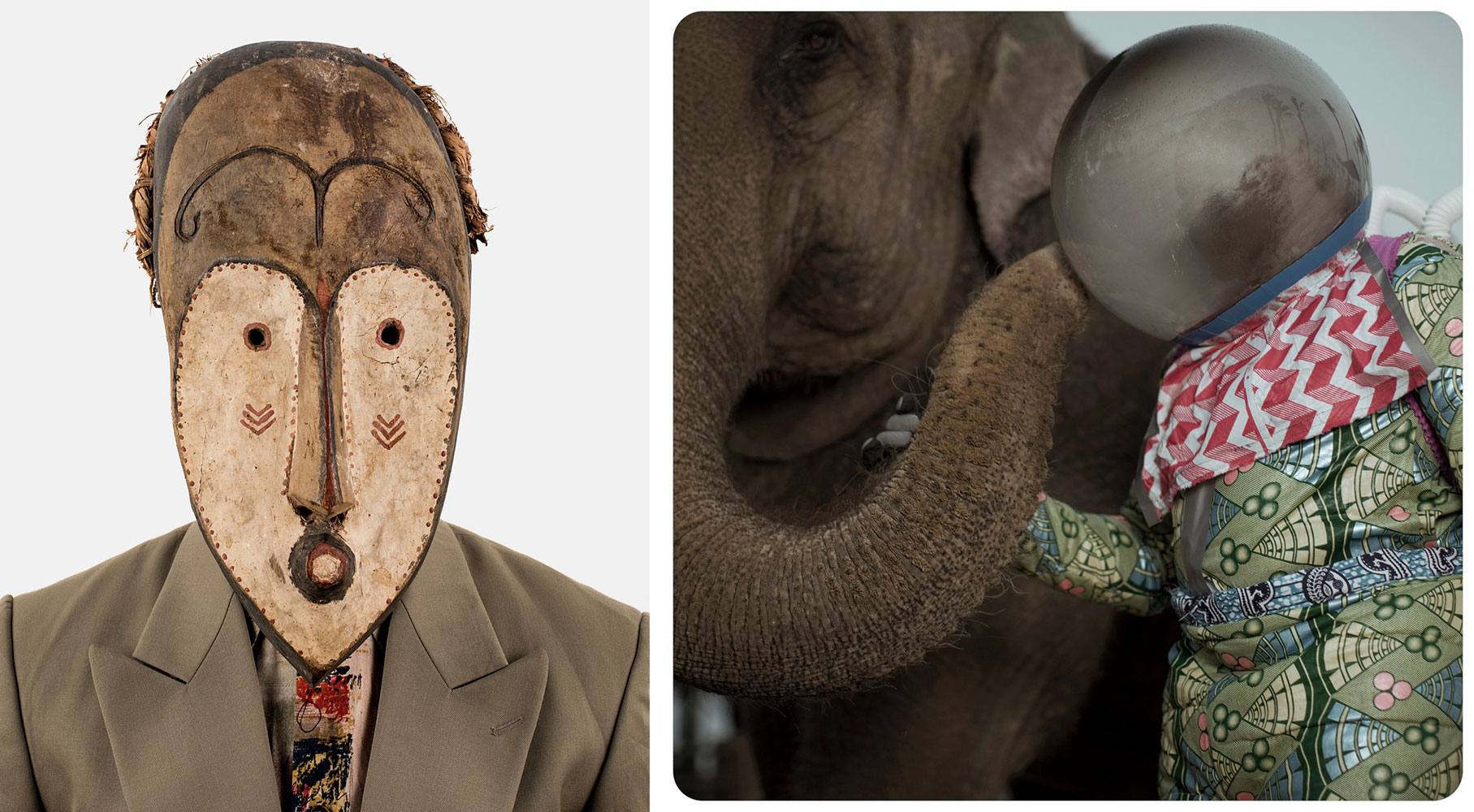PHOTO: A World in Common-Contemporary African Photography
 The exhibition “A World in Common: Contemporary African Photography” brings together 36 artists who use photography to reimagine Africa’s place in the world. It is inspired by the continent’s rich cultural traditions, as well as present-day social and political realities. Drawing on the theories of Cameroonian philosopher Achille Mbembe the exhibition invites us to imagine ‘a world in common’. To do this, Mbembe claims, we must ‘think the world from Africa’. A World in Common explores Africa’s past, present and future to create a more expansive and inclusive narrative of humanity. It suggests that to conceive ‘a world in common’ is to imagine a future of possibility.
The exhibition “A World in Common: Contemporary African Photography” brings together 36 artists who use photography to reimagine Africa’s place in the world. It is inspired by the continent’s rich cultural traditions, as well as present-day social and political realities. Drawing on the theories of Cameroonian philosopher Achille Mbembe the exhibition invites us to imagine ‘a world in common’. To do this, Mbembe claims, we must ‘think the world from Africa’. A World in Common explores Africa’s past, present and future to create a more expansive and inclusive narrative of humanity. It suggests that to conceive ‘a world in common’ is to imagine a future of possibility.
By Dimitris Lempesis
Photo: Tate Archive
The exhibition “A World in Common: Contemporary African Photography” is divided into three chapters: “Identity and Tradition”, “Counter Histories” and “Imagined Futures”. The first chapter is rooted in ancient African cultures and traditions which have survived periods of struggle and resistance. Inspired by Pan-African liberation movements, the second chapter looks at photography’s ability to produce counter histories – archival practices and the agency of photographer and subject are brought into focus. The third chapter explores the impact of globalisation and the climate emergency. Here, artists imagine a shared future informed by common realities. The exhibition creates space for exchange and discovery, inviting us to imagine new ways of inhabiting the earth. The first chapter of the exhibition explores the relationship between identity and tradition. In the following three rooms, artists preserve and reinvent cultures, religions and art forms that have survived violent erasure. People from Europe and Asia have settled in regions of Africa since ancient times, controlling land, natural resources and peoples. From the 16th century, Europeans enslaved more than 10 million Africans, abducting them from their homes and their cultural heritage. This history of enslavement, violence and colonialism reached its height in the 19th century. During this period, Britain, France, Spain, Germany, Belgium, Portugal and Italy invaded, divided and colonised most of Africa. The Asante, Fula, Ndebele, Opobo, Shona, Tuareg and other Indigenous peoples fought these invasions. However, through a combination of nationalistic competition, extreme racism and automatic weaponry, European powers conquered 90% of Africa by 1914. Britain alone assumed control of nearly a third of the continent. The artists in this room pay tribute to the monarchs and matriarchs who resisted this violence. Colonial governments defined territories without consideration of Indigenous populations and denied rulers their authority. Despite this, kings, queens and chiefs continue to play an essential role in many African societies. These photographers address the rich heritage of kingdoms such as the Asante of Ghana and the Yoruba of Nigeria, who are descended from the goddesses and gods of the ancient spiritual capital, Ilé-Ifẹ̀. Their images draw attention to issues of sovereignty and independence that have permeated postcolonial Africa. More than visions of a lost past, they demonstrate how African identity continues to be shaped by powerful ancestral legacies and traditions. Spirituality in Africa is as complex and diverse as the continent itself. A syncretic approach, combining different religious practices, is common. Traditional religions often revolve around philosophical questions of existence and being, explored through sacred myths and rituals. They have been carried from one generation to the next through oral traditions and taken across the world by the African diaspora. While some countries have practised Christianity for centuries, during the colonial period, European missionaries sought to ’convert’ communities, suggesting their religions were rooted in anti-Christian values. Figures like the Kenyan philosopher and Anglican Priest John Mbiti (1931–2019) challenged these stereotypes. He argued that African religions deserve the same respect as Abrahamic faiths. Ultimately, these spiritual traditions survive, preserving the ability to connect the living and spirit worlds. Drawing from Indigenous African, Christian and Islamic iconography, the artists in this room look at the body, ceremony and devotion. They examine ritual as a source of healing and a way to connect with communities near and far, real and imagined. Through their practices, these artists consider spirituality as a personal journey towards a shared humanity beyond cultural, religious and political borders. Masks are a significant part of African cultural heritage, playing an important role in ritual and ceremonial performances across many regions. For centuries, they have been used to form relationships between individuals, communities, the environment and the cosmos. By putting on a mask, performers enter a sacred realm between the living and ancestral worlds. During the 19th and early 20th centuries, masks were removed from these spaces of ritual and taken to Europe where they became museum objects. European artists also collected and appropriated these masks, further divorcing them from their history. Here, contemporary artists engage with their heritage while challenging these histories of dispossession. They explore the enduring power of the mask and the moral and philosophical challenges that arise from their multiple meanings. Their work speaks to the writings of Senegalese philosopher Souleymane Bachir Diagne (born 1955) and his question, ‘What do African masks mean? What do these objects, labelled fetishes, say once the gods have departed?’ In “Worrying the Mask” (2020) Zina Saro-Wiwa interrogates the use of masks to represent communities and cultures. Her performance-lecture demands we think differently about these objects, questioning how they are displayed and contextualised. Combining photography with performance, the artists in this room use masks to explore the politics of identity, gender and power. Through play and provocation, they ask us to consider their meaning as living objects.
The second chapter of the exhibition looks at counter histories. Here, our focus turns to the camera’s ability to challenge the colonial gaze and produce alternative images of the past. In the 19th century, photography became a valuable tool for colonial powers. Ethnographic images of African peoples and landscapes were distributed through postcards and magazines. They ‘othered’ subjects and created racist stereotypes that legitimised the mission of empire. The works in the following rooms confront these fictions. They honour a long history of studio portraiture that gives agency to African photographers and their sitters, interrogate colonial archives and uncover hidden histories. ‘Family Portraits’ explores Africa’s rich studio culture, which began in the 1840s in many coastal cities. Photography studios gave communities greater agency over their appearance and during the period of independence, they became joyous spaces for the projection and performance of new identities. These photographs range from formal 19th-century portraits engaging with Victorian respectability politics, to intimate snapshots that expand the concept of the family photo album. Together, these photographers celebrate the family portrait as a site of co-production and self-representation. Following the end of the Second World War, African nations demanded their independence from European powers. In 1957, Ghana became the first sub-Saharan African country to gain independence from Europe. Pan-Africanist leader and Ghana’s first president, Kwame Nkrumah (1909–1972) declared: ‘We believe in the rights of all peoples to govern themselves. We affirm the right of all colonial peoples to control their own destiny. All colonies must be free from foreign imperialist control.’ During this period of independence, colonial archives were abandoned, hidden and destroyed. Documents, photographs and maps created to define boundaries and claim authority took on new meanings. Beyond repositories of historical documents, archives came to be understood as active systems of knowledge, connecting the past to the present. These artists engage with the archive as a site of reimagining. They address the accumulation of official documents and images and bring new stories to light, creating counter histories. Using photo albums, passports and postcards, they privilege personal perspectives and challenge the official accounts of colonial administrations and nation-states. ‘The Living Archive’ introduces a new order of events in which suppressed narratives gain new currency.In the exhibition’s final chapter, artists contemplate futures shaped by globalisation and the climate emergency. In times of crisis, they find inspiration in the promise of new worlds and shared dreams for a new society. Dispensing with colonial visions of Africa, they turn to the ‘planetary’, where humans, technology and the natural world come together to form interconnected ecosystems. Artists explore how urbanisation has transformed the continent and its ways of life. Foreign and domestic investment and higher-paying jobs have encouraged Africa’s young population to move to cities. Kinshasa, Lagos and Cairo are now considered megacities, with populations over 10 million. For these artists, the city becomes a site of collective histories and a dynamic stage for the production of global networks and relations. Shifting geopolitics and plentiful resources mean Africa’s economic growth is now predicted to outpace the rest of the world. However, the exploitation of natural and human resources has left the continent caught between the promise of a brilliant future and an uncertain present. In recent years natural disasters, extreme weather and mass migration have put the future of our planet into focus. While global in reach, these issues disproportionately affect citizens of the Global South. Here, artists address this uncertainty by turning to their environment. They face the consequences of humanity’s self-destruction and explore alternative ways of being. In the final room of the exhibition, two artists take us on journeys through forests, across oceans and along migratory paths. They consider how the natural environment fosters conditions for growth and rebirth. These artists address nature as a dynamic and generative force, inviting us to imagine new ways of inhabiting the earth. Throughout the exhibition, artists have pursued a shared humanity through the concept of ‘a world in common’. Their expansive and inclusive approach to storytelling makes space for different ways of thinking and being in the world. By acknowledging there is no single site for the production of knowledge, these artists imagine multiple futures.
Participating Artists: Kelani Abass; Leonce Raphael Agbodjélou; Malala Andrialavidrazana; Atong Atem; Sammy Baloji; James Barnor; Edson Chagas; Kudzanai Chiurai; Ndidi Dike; Andrew Esiebo; Em’kal Eyongakpa; Rotimi Fani-Kayode; Hassan Hajjaj; Délio Jasse; Julianknxx; Samson Kambalu; Kiripi Katembo; Lebohang Kganye; Kiluanji Kia Henda; François-Xavier Gbré; Maïmouna Guerresi; Mário Macilau; Lazhar Mansouri; Sabelo Mlangeni; Cristina de Middel; Santu Mofokeng; Fabrice Monteiro; Aida Muluneh; Wura-Natasha Ogunji; Zohra Opoku; George Osodi; Ruth Ossai; Léonard Pongo; Dawit L. Petros; Zina Saro-Wiwa; Khadija Saye
Photo: François-Xavier Gbré. Untitled, 2013, © François-Xavier Gbré
Info: Curators: Osei Bonsu, Assistant Curators: Jess Baxter, Genevieve Barton and Katy Wan, Tate Modern, Bankside, London, United Kingdom, Duration: 6/7/2023-24/1/2024, Days & Hours: Daily 10:00-18:00, www.tate.org.uk/




Right: Lebohang Kganye, Kwana Germiston bosiu I, 2013, Photograph, inkjet print on paper; 335 × 232 mm, Courtesy of Lebohang Kganye

Right: Ruth Ossai, Student nurses Alfrah, Adabesi, Odah, Uzoma, Abor and Aniagolum. Onitsha, Anambra state, Nigeria, 2018, Photograph, inkjet print on paper; 1016 × 673 mm, © Ruth Ginika Ossai

Right: Cristina de Middel, Butungakuna, 2012, Photograph, inkjet print on paper; 970 x 970 mm, © Cristina de Middel

